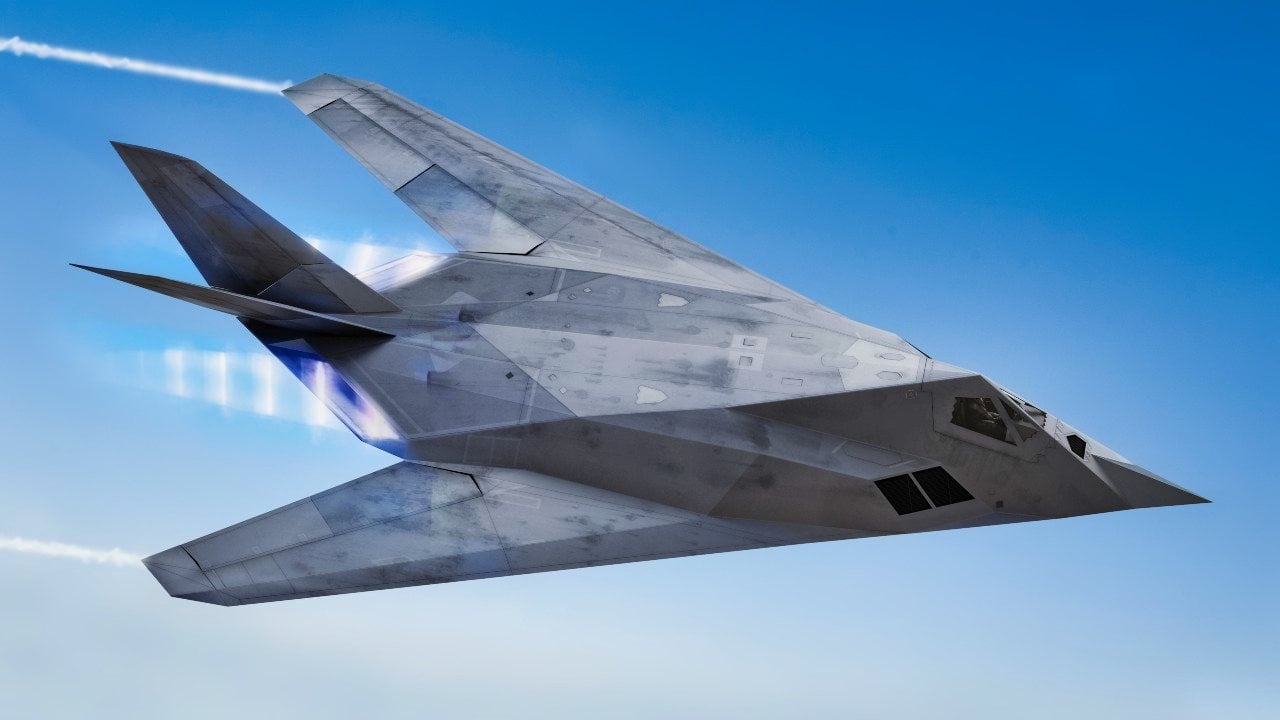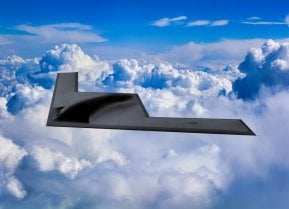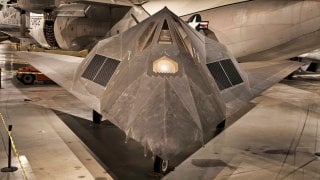F-117 Nighthawk: The Story Of The Incredible First Stealth ‘Fighter’
When the Pentagon officially acknowledged the existence of the F-117 Nighthawk stealth “fighter” back in November 1988, it finally ended years of speculation on the part of the media and the general public alike
When the Pentagon officially acknowledged the existence of the F-117 Nighthawk stealth “fighter” back in November 1988, it finally ended years of speculation on the part of the media (MSM) and the general public alike. (I use quote marks around “fighter” because the word is a misnomer in this instance, which I shall elaborate upon shortly).
The MSM’s speculation hit a fever pitch after one of the then-still-secret planes crashed near Bakersfield, California in July 1986. One of the more creative forms of public imagination about the warplane manifested itself in the form of the Testor’s so-called “F-19 Stealth Fighter” 1:48 scale plastic model kit, which supplanted AMT’s U.S.S. Enterprise as the best-selling model kit of all time.
Shortly after the official Defense Department disclosure of the plane’s existence, along came humorous t-shirts sarcastically proclaiming the F-117A to be “The U.S. Air Force’s Best Kept Secret.” (At least one of my high school buddies had one of these shirts).
Well, now that the proverbial cat has been out of the bag for many years (boy, time sure does fly, albeit not so stealthily), let’s take a look back at the history of this remarkable bomber, er, so-called “fighter.”
F-117 Stealthy Skunks Slink Secretly Skyward
The F-117 was yet another one in a long line of successful warplanes produced by Lockheed’s (now Lockheed Martin’s) famed Skunk Works program, harkening black to DARPA’s Have Blue program of the 1970s.
However, Skunk Works’s iconic founding father and mastermind, Clarence “Kelly” Johnson, had already been retired for six years by the time the Nighthawk made her maiden flight out of Groom Lake, Nevada on June 18, 1981. The Nighthawk attained operational status in October 1983.
As I mentioned above, it’s a misnomer to call the F-117A a “Stealth Fighter,” as she has zero air-to-air armament — cannons and missiles would have compromised the radar signature and therefore canceled out the “stealth” advantage — and is rather strictly a ground attack plane, capable of carrying 2,000 pounds (910 kilograms) worth of laser-guided “smart” bombs and the nuclear B61 bomb alike.
In addition, the plane was too slow and lacking in maneuverability to go up against true fighters of the fourth-generation, such as the MiG-29 Fulcrum, as the plane was subsonic, with a maximum airspeed of 684 mph (Mach 0/92/ 1,100 kph/ 594 knots). Indeed, the plane was nicknamed “Wobblin’ Goblin” in some quarters due to its alleged instability at low speeds, although some of its pilots have countered that the sobriquet was undeserved. Other unflattering nicknames have included “Hopeless Diamond,” “Roach” and “Stinkbug.”
THE NIGHTHAWK POUNCES UPON HER PREY
While those aforementioned monikers convey the impression of an ugly duckling, the Nighthawk’s actual combat performance turned out to be a thing of beauty – akin to another “ugly warplane, the A-10 Warthog.
Thanks to the collapse of the Soviet Union, the F-117 never got to deploy that B-61 doomsday device. But the warbird would see plenty of conventional aerial warfare action soon enough and thus cement her legend in the process.
The F-117 received her baptism of fire in the skies over Panama during Operation Just Cause in December 1989. That combat debut was a trifle underwhelming, but that mission was merely a comparative calm before the storm … as in Operation Desert Storm.
During the 1991 air campaign against Saddam Hussein’s Iraqi regime, the “Stealth Fighter” attained virtual overnight stardom, as for most members of the general public and MSM this was the introduction to the concept and efficacy of smart bombs – although actually, precision-guided munitions had already been combat-tested during the Vietnam War. The “overnight” aspect was in some ways quite literal, as noted by Dario Leone of The Aviation Geek Club:
“As told by Jim Goodall in his book F-117 Stealth In Action, the first manned USAF aircraft to fly into hostile Iraqi airspace was the F-117As of the 37th TFW. ‘At approximately 0130 on 17 January, two squadrons of F-117As dropped approximately sixty 2,000 pound bombs on key Iraqi air defense, command and control facilities, ammunition bunkers, SCUD surface-to-surface missile bunkers, missile storage facilities, and the headquarters of the Iraqi Air Force,’ he explains…The F-117As attacked thirty-one percent of all targets struck during the first twenty-four hours of the war, and were the only aircraft involved in attacks on heavily defended targets in and around Baghdad on the first night of the war…It was an F-117A that dropped the first bomb of the war, attacking a telecommunications center in Baghdad.“

That telecommunications center was euphemistically dubbed “the AT&T building.“
NOT TRULY INVISIBLE … OR INVINCIBLE
The F-117 continued to serve ably during Operation Allied Force in 1999, Operation Enduring Freedom in 2001, and Operation Iraqi Freedom in 2003.
However, it was during Allied Force that the so-called “Stealth Fighter” lost some of its luster, as the plane’s air of invincibility (bad pun fully intended) and invisibility was abruptly shattered on the night of March 27, 1999, when an SA-3 “Goa” missile downed a Nighthawk piloted by Lt. Col. Dale Zelko under the command of Yugoslav Army Col. Zoltán Dani of the 250th Air Defense Brigade.
Time and space limitations don’t allow for a super-detailed explanation of how Col. Dani pulled it off, but the short version is provided by Guy De Launey of BBC News:
“Citing Serbian electronics genius Nikola Tesla as an inspiration, Zoltan had the equipment modified so it would operate beyond the usual wavelengths. Perhaps it was this which allowed him to detect Dale Zelko’s stealth fighter. ‘When it hit, it felt very, very good. Like scoring the winning goal in a football match,’ says Mr Dani.” Lt. Col. Zelko was safely ejected from the plane, and the De Launey article goes on to provide a remarkable human interest story of a postwar friendship that has developed between these two former foes. Dani, who became a Serbian national hero on account of his exploit, now runs a successful bakery in Belgrade.
WHERE ARE THEY NOW?
A total of 59 were built between 1981 and 1990. The USAF retired the Nighthawk in 2008 in order to free up funds for the first true stealth fighter, the F-22 Raptor.
Several of the warbirds are on display at museums around the U.S., including the Ronald Reagan Presidential Library in Simi Valley, California.
About the Author
Christian D. Orr is a former Air Force officer, Federal law enforcement officer, and private military contractor (with assignments worked in Iraq, the United Arab Emirates, Kosovo, Japan, Germany, and the Pentagon).
All images are Creative Commons.


